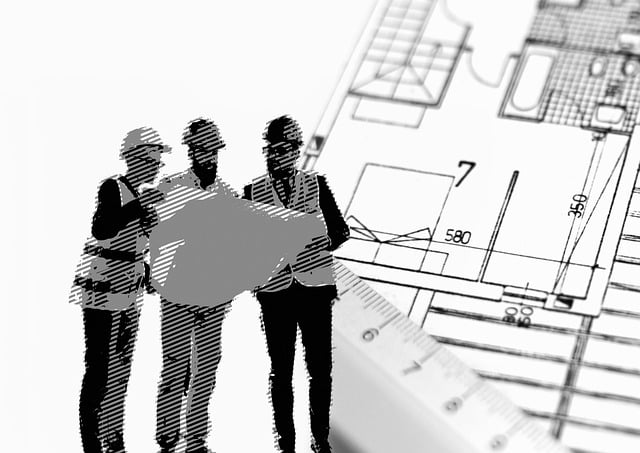3D steel modeling is transforming construction and engineering by providing detailed digital representations of complex geometric shapes and precise measurements for structural steel detailing. This technique enhances design clarity, enables early clash detection, saves time and money, and improves overall construction efficiency while ensuring safer projects. Specialized software like AutoCAD, Revit, and Fusion 360 allows engineers to create intricate models, define material properties, generate accurate drawings, and simulate strength, revolutionizing structural steel detailing processes in modern architecture and engineering.
In today’s construction landscape, 3D steel modeling is revolutionizing visualization and clash detection. This advanced technique offers unprecedented accuracy and efficiency in structural steel projects. By understanding the intricacies of 3D steel modeling and its benefits for visualization, we can explore how it plays a pivotal role in identifying conflicts early on through structural steel detailing.
From enhancing collaboration to minimizing costly delays, this technology is leaving an indelible mark on the industry.
Understanding 3D Steel Modeling and Its Benefits for Visualization
In the realm of construction and engineering, 3D steel modeling has emerged as a powerful tool for visualization and clash detection. This advanced technique allows professionals to create detailed digital representations of structural steel components, offering an unparalleled level of clarity and precision. By employing 3D modeling software, engineers can intricately design and visualize every aspect of structural steel detailing, from complex geometric shapes to precise measurements.
The benefits of this technology are vast. It streamlines the design process by enabling simultaneous visualization and analysis of various elements, thereby enhancing productivity. Moreover, it facilitates early detection of potential clashes or conflicts between different building systems, reducing costly on-site errors. This proactive approach, made possible by 3D steel modeling, not only saves time and money but also ensures safer and more efficient construction projects.
The Role of Structural Steel Detailing in Clash Detection
Structural steel detailing plays a pivotal role in clash detection within complex 3D models. It involves creating precise digital representations of steel components, including their dimensions, shapes, and interconnections. By meticulously documenting these aspects, designers and engineers can ensure that each element fits perfectly within the overall structure, avoiding potential conflicts with other building systems.
Effective structural steel detailing enables comprehensive visualization, allowing stakeholders to identify and resolve issues early in the design phase. This process involves using specialized software to model intricate steel frames, beams, columns, and trusses, providing a detailed digital twin of the physical structure. Such modeling facilitates clash detection by simulating potential interactions between steel members and other building components, ensuring structural integrity and safety throughout construction.
Process and Tools for Effective 3D Steel Modeling
The process of 3D steel modeling is a meticulous art, crucial for visualizing and accurately representing complex structural steel designs. It involves translating architectural blueprints and engineering calculations into tangible three-dimensional models. This digital transformation not only enhances visualization but also facilitates clash detection, identifying potential conflicts between various building components early in the design phase. Professional engineers and architects leverage specialized software tools to create intricate detailed models, ensuring precision and compliance with industry standards.
Effective 3D steel modeling requires a comprehensive toolkit. Software solutions like AutoCAD, Revit, and Fusion 360 are commonly used for their advanced structural steel detailing capabilities. These platforms enable users to model complex geometries, define material properties, and generate precise drawings. Additionally, simulation tools integrated into these software suites allow engineers to test the strength and stability of steel structures, further refining the design process and ensuring safety.
Real-World Applications: Success Stories of 3D Modeling in Construction Projects
In the realm of construction, 3D steel modeling has emerged as a game-changer, revolutionizing how projects are visualized and executed. This technology is not just a buzzword; it’s a proven success story with numerous real-world applications. For instance, in large-scale infrastructure projects, detailed 3D models of structural steel frameworks enable architects and engineers to catch potential clashes between different elements early in the design phase. This meticulous modeling saves time, reduces costly on-site errors, and enhances overall project efficiency.
One notable success story involves the construction of a modern, vibrant metropolis where intricate, custom-designed structural steel detailing was required for iconic buildings. By leveraging 3D modeling software, engineers were able to create precise models that not only facilitated clash detection but also allowed for better cost estimation and material planning. This level of accuracy led to a significant reduction in project delays and budget overruns, showcasing the tangible benefits of advanced 3D steel modeling in construction.
3D steel modeling has emerged as a game-changer in the construction industry, revolutionizing both visualization and clash detection processes. By leveraging advanced technologies, professionals can now create detailed digital representations of steel structures, enabling better decision-making and enhancing collaboration. The benefits are clear: improved accuracy, reduced errors, and faster project timelines. As we’ve explored through this article, structural steel detailing plays a pivotal role in ensuring seamless integration and identifying potential conflicts early on. With the right tools and processes in place, 3D modeling offers a robust solution for navigating complex construction projects, ultimately contributing to safer, more efficient builds.
